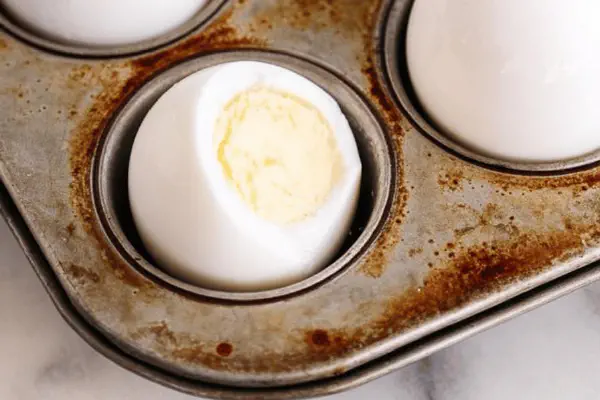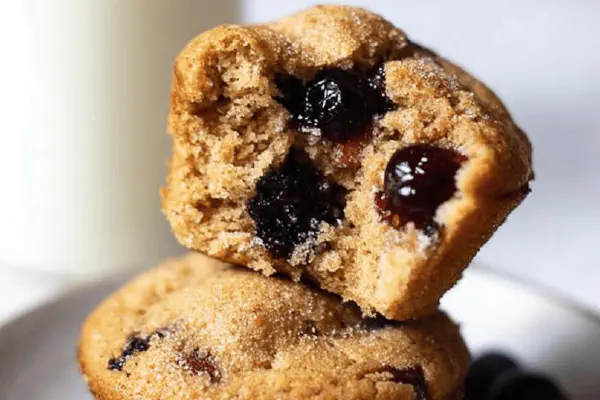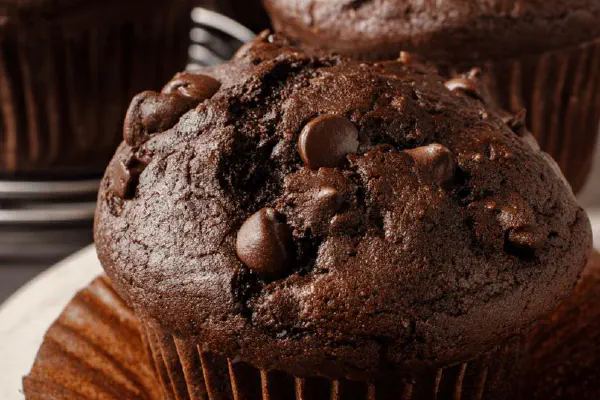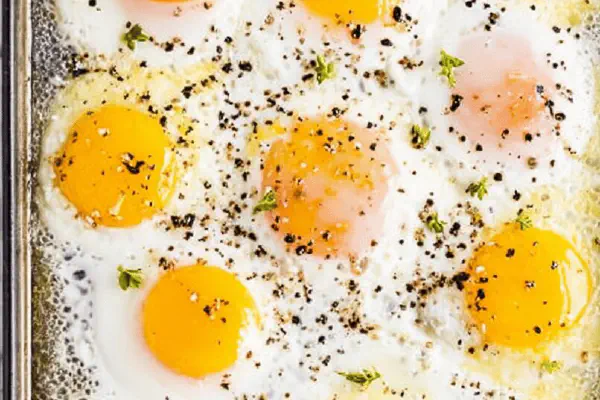Oven Baked Hard Eggs

E
By Emma
Certified Culinary Professional
•
Recipe tested & approved
Bake eggs in a muffin tin with water at 345°F for about 28 minutes. Drop directly into ice water for a quick chill. Peel to reveal firm whites with creamy yolks. Uses muffin tin cavities as tiny water baths—steam and bake method. Less cracking than boiling. Swap chicken eggs for duck eggs if you want bigger protein punch. Timing’s flexible; watch for gentle jiggle near yolk center—no overcooked green rings. Salt in water can help peel, but that’s optional. Muffin tin keeps eggs upright, so steam evenly. Heat and water balance makes it forgiving. Timing and texture cues over clocks here.
Prep:
7 min
Cook:
28 min
Total:
35 min
Servings:
12 servings
#eggs
#baking
#breakfast
#kitchen hacks
#egg peeling
Eggs in the oven. Not boiling. Muffin tins sit there like little steam cradles. No water baths on stove. No rolling boil fuss. Just heat and a little splash of water inside the cup. I learned this after battling cracked shells dropping eggs in boiling water. The hot air oven cooks evenly, firm whites, tender yolks. Peek at the shell’s surface for changes in opacity and feel them gently. You’ll get the hang of wobble timing versus clock. Stop guessing if your yolks are chalky or creamy. Ice bath right after—they snap shut. Tough peel usually means skip ice bath or cook over long. I tweaked oven heat off recipes to reduce cracks. Switch eggs, alter times a touch, feel your kitchen’s heat flow. Eggs come out consistent in color and texture with little fuss. No hiss or scream of rolling water but steady heat hum delivers results.
Ingredients
- 12 large eggs
- warm water enough to fill muffin tin cavities about 1/3
- optional: pinch of salt in water
About the ingredients
Eggs work best at room temp here to avoid cracking from thermal shock. Cold eggs straight from fridge often crack when inserted into muffin tin if water’s too hot; bring eggs out early or warm the water slightly. Using standard large eggs keeps baking times predictable. Duck eggs—harder thicker shell—need more time, almost 35. The water in muffin cups creates a small steaming effect. You can add a pinch of salt or even a splash of white vinegar to the water; vinegar loosens eggshell membranes, easing peel but avoid strong scents. Tap eggs gently when placing in cups to settle. No need to grease muffin tin; water does the work. This method could work on other egg sizes but watch for jiggle and color shifts more than time alone. Oven temperature fluctuates; keep an eye on eggs near bake end for slight wobble inside. Can also swap muffin tin for ramekins but makes cleanup trickier, careful for spillage at removal stage.
Method
- Start by preheating oven to 345°F. I dialed it down from 350°F after a couple tries—less cracking, yolk creamier.
- Place each egg upright into a 12-cup muffin tin cavity. This keeps eggs stable, no rolling nudges that cause cracks.
- Pour warm water into each cavity until it reaches about one third to halfway up the eggshell. The water steams the egg gently, preventing dry edges.
- Slide muffin tin carefully into the oven. The oven's dry heat combined with moist steam cooks eggs evenly. Bake for roughly 28 minutes. Timing varies by oven; after 25 minutes gently jiggle the eggs—the shell transparency should lighten and faint wobble near the yolk center signals doneness.
- Remove from oven, immediately submerge eggs into an ice water bath for 3 to 4 minutes. Stop cooking, firm white sets but yolk not chalky. Ice bath cools them quickly, making peeling simpler.
- Tap shell with firmness but not too hard. Start peeling from wider end where the air pocket lives. If stubborn, peel under cold running water to ease membranes.
- Serve right away or store peeled in damp paper towel covered container. Note: Duck eggs need 33-35 minutes, same temp, but thicker shells.
- Variations: swap water for diluted white vinegar if you want easy-peel. A teaspoon to half cup ratio. Helps membrane release without tasting vinegar.
- Avoid overcooking: greenish yolk means yolk’s iron sulfide reaction happened—too long or too hot.
- Ever cracked an egg early? Prick shell with pin at base lightly pre-baking to prevent bursting during heat expansion.
Cooking tips
Preheat oven to 345°F—lowered by me from traditional 350 to minimize cracking shells. Place one egg per muffin slot upright. You want the air pocket facing up if possible; helps with peeling after cooking. Pour warm water to cover about one third up shells; water cools and steams eggs simultaneously. Steam prevents dry egg whites on edges, hold moisture. Bake about 28 minutes, but watch eggs, look for subtle shell opacity change and gently shake each to feel slight wobble in center—yolk moving means it’s just right. Remove hot tray with care; immediately plunge eggs into ice cold water for 3 to 4 minutes. This halts cooking, firms whites still tender in yolks. Peel by cracking shell all over, start on wider end (air pocket side). If it clings, peel underwater or rub shell bits off more easily. Overcooked means rubbery whites and green yolks—lower heat or reduce bake time next go. Pinprick shell base before baking avoids cracks from trapped air expanding. Store peeled eggs damp in fridge, rehydrate with moist towel to maintain softness. A little experimentation turns this dependable; time and sensory cues beat timers alone.
Chef's notes
- 💡 Preheat at 345°F not 350. Lower temp cuts cracking. Eggs sit upright in muffin tin. Air pocket faces up better peel. Water covers about a third up shell. Steam stops edges drying. Timing varies ovens; peek for shell opacity shift, gentle wobble near yolk center. Jiggle test beats clock always. Ice water bath 3-4 min stops cooking hard and eases peel.
- 💡 Water temp matters too; warm water not boiling avoids thermal shock. Cold eggs from fridge crack if water too hot. Bring eggs to room temp or warm water slightly. Salt or splash white vinegar in water helps shells loosen; vinegar ratio tiny to half cup max or taste hits. Tap egg in tin gently settles before water. No oil or grease needed on tin; water does the work.
- 💡 Duck eggs thicker shell, need 33-35 min at same oven temp. Use jiggle and visual shifts, not just time. Oven temps fluctuate, watch eggs near end for wobble. Pinprick base with pin before baking stops shell pop from expanding air. Peel under cold running water if membranes cling stubborn. Store peeled eggs in damp paper towel covered container prevents drying.
- 💡 Watch for greenish yolk rings, sign overcooked iron sulfide reaction. Lower heat or shorten bake next time then. Cracked eggs? Try pinpricking base before baking. Muffin tin keeps eggs upright steady, stop rolling causing cracks. Also works with ramekins but messier cleanup and spillage risk, less stable.
- 💡 The water acts as small steam bath. No rolling boil stress. Heat and moisture balance key. Crack shells all over before peeling. Start at air pocket side wider end. Ice bath snaps whites firm but yolk tender. Egg texture cues > timer. Put eggs in warm water, bake, wobble check, plunge ice. Peel while damp. Timing’s flexible by feel, texture, and sight not rigid clocks.
Common questions
How long do baked eggs take?
Roughly 28 minutes at 345°F. Duck eggs add few mins. Oven varies so check wobble near yolk, not just time. Peek shell color change. Ice bath finishes.
Can I use cold eggs?
Cold eggs cause cracks if water too hot. Better out room temp first. Or warm water less thermal shock. Cold works but prep needed. Salt or vinegar helps peel too.
Why peel hard here hard?
Usually skipped ice bath or overcook. Water bath cools fast shutting whites firm. Too long bake gives green yolk rings and rubbery texture. Tap, crack all over and start wide end. Peel in running water if tough.
How store baked eggs?
Peel, wrap damp paper towel, store covered in fridge. Keeps softness. Or keep unpeeled few days same way. Rehydrate with moist towel when ready. Not forever but few days good.



